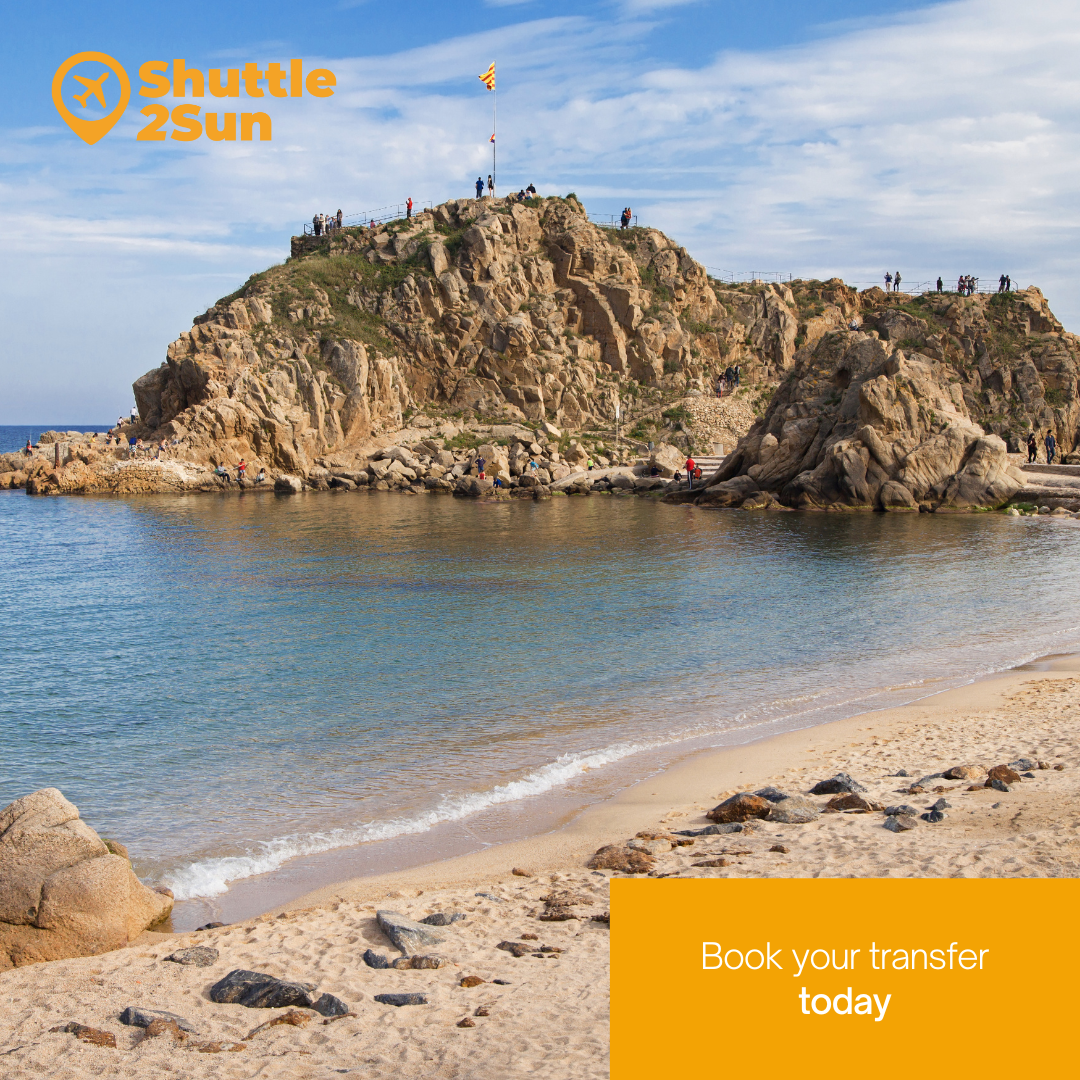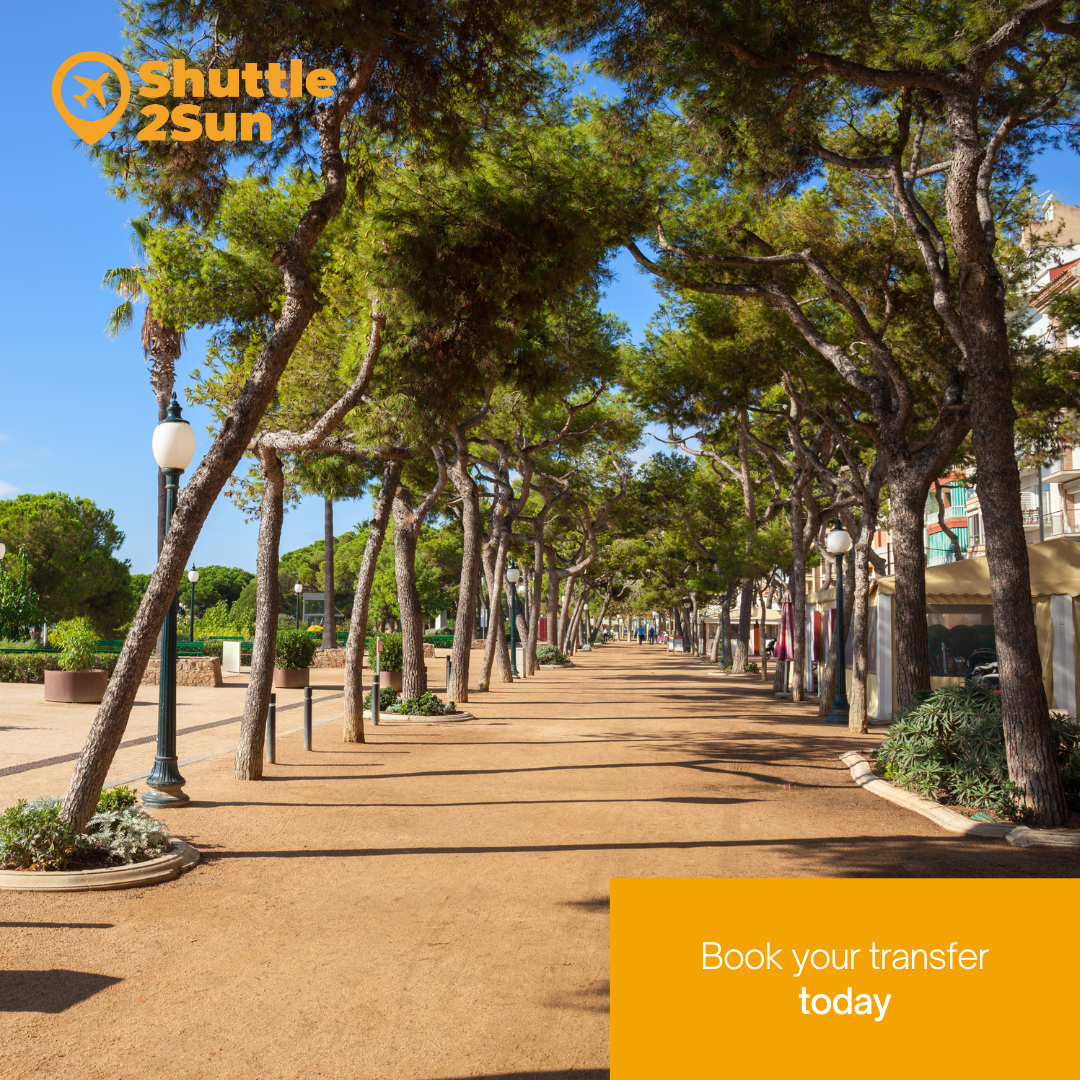In the heart of the region of La Selva, in the province of Girona, the town of Blanes welcomes us to Costa Brava, a municipality bordered by the river Tordera to the south and Lloret de Mar to the north. This town, bathed by the Mediterranean Sea, is known as the “Gateway to Costa Brava“, as it is the first, to the south, of the group of towns that border this Catalan coastline.
It is a town full of life, with a very important fishing and seafaring history, and where you can enjoy numerous architectural monuments that recall its past. It is also an ideal destination to enjoy the sun and the beach, as well as nature, thanks to the magnificent natural spaces, such as its gardens, which are a must to visit.
Blanes hides incredible wonders that deserve your attention. From Shuttle2Sun, we put at your disposal our shared transfer services and private transfer services, low-cost and sustainable, so you can move to this town on Costa Brava, from Barcelona airport, Barcelona port, Reus airport, Girona airport and Camp de Tarragona AVE train station.
Fishing fleet
One of the most striking features of this town at first glance is its port. This is where its large fishing fleet rests, which, together with Confraria de Pescadors de Blanes, works day after day to supply the town’s restaurants and shops with high-quality fresh produce. It currently has around fifty boats of different types.
Its fishing port has been, since Roman times, very important, both for the economic activities of the town, as well as a link with other countries. The current port was built during the first decades of the 20th century, and later remodelled until it became what it is today.
Because of the great fishing activity that the municipality preserves, its gastronomy is also characterised using these seafood products. Moreover, we are talking about zero-kilometre food, as it is fished and marketed in this place. The menus of its restaurants highlight this type of products, so that residents and visitors alike can enjoy the magnificent local Mediterranean cuisine.
A journey through the history of Blanes
Since prehistoric times, Blanes has been inhabited by humans who have left their mark on its town planning and architecture.

The first remains suggest that it may have been inhabited by an Iberian settlement in the 3rd century BC, probably on Sant Joan Mountain, where we find Castell de Sant Joan, nowadays one of the most visited places due to its incredible panoramic views of the municipality.
With the arrival of the Roman Empire, the town became a colony and began to be called “Blanda” or “Blandae“. During the Middle Ages, Castell de Sant Joan was under the power of Viscount Sunifred of Girona and, later, of Viscounts of Cabrera, from the end of the 14th century onwards.
Throughout this period, the town underwent a series of changes that modified its urban structure. During this period, Ermita de Sant Joan Baptista was built, next to the fortification, on Sant Joan Mountain. This small temple hides some beautiful illustrations by the well-known cartoonist and caricaturist, Pilarín Bayés. The octagonal-shaped Gothic fountain was also built on Carrer Ample, as well as the old hospital for the poor of Sant Jaume, whose activity dates to the 15th century.
If you want to know the history of Blanes, remember that Shuttle2Sun offers its shared transfer services and private transfer services, low-cost and sustainable, so you can get to this town from Barcelona airport, Barcelona port, Reus airport, Girona airport and Camp de Tarragona AVE train station.
Other emblematic buildings in the municipality of Blanes include Església de Santa Maria de Blanes; the convent of Blanes, built at the end of the 16th century, which is now an ideal venue for events; as well as the neo-Gothic pantheons in the cemetery and various chapels and chapels, such as Sant Francesc, Santa Barbara and L’Antiga.

Route of the Americanos
As in many towns along the Catalan coast, during the 18th and 19th centuries, many sailors set sail for the colonies of Cuba and Puerto Rico to work. As a result, these people, who were known as “indianos“, later immersed themselves in the culture of the American continent and built homes in their native town, in this case Blanes, with a most striking and different architecture.
Nowadays, you can take a route to see the different Indian buildings, including Can Gallet, one of the most striking houses at Carrer Esperança, owned by Mayor Bonaventura Puig Torrent; and Can Massó, at Passeig de Dintre. Also, Can Alemany, built in 1882; Ca l’Andreu, a house that was the summer residence of the poet Joan Maragall; Can Vieta, located on Passeig de la Mestrança; Can Panxo gordo; Casa l’estrella; Can Nonell; Ca la Teresina Savoia, owned by Teresa Ferrer and Doctor Joaquim Albareda; as well as Can Bitlloch; Can Pa i alls, Can Capó and Cal Ros.
Coves and beaches, and other natural spaces
One of the most representative places in the town of Blanes is the large rock that begins the beaches of the municipality from the south, called Sa Palomera. You can climb up some stairs that take you to a viewpoint from where you can enjoy a privileged view of the town’s coastline.
Here you will find an arch in the shape of a sail, which symbolises the gateway to Costa Brava. Around Sa Palomera, you will find two smaller rock formations, Sa Pujola and Se Portell.
Blanes has a wide range of beaches and small coves that will make you feel like you are in paradise. Particularly noteworthy are Platja de Blanes, the best known; Platja de Santa Anna and Platja S’Abanell; but we should also consider Cala Sa Forcanera; Cala S’Agulla; Cala Treumal and Cala Sant Francesc.
Finally, you cannot miss its two large gardens: the four-hectare Marimurtra, with more than 4,000 exotic species from all over the world. And Pinya de Rosa tropical garden, especially characterised by its large cactus plantation.
Discover all the nooks and crannies of Blanes! Remember that with Shuttle2Sun‘s shared transfer services and private transfer services, low-cost and sustainable, you can move to this town from Barcelona airport, Barcelona port, Reus airport, Girona airport and Camp de Tarragona AVE train station.



